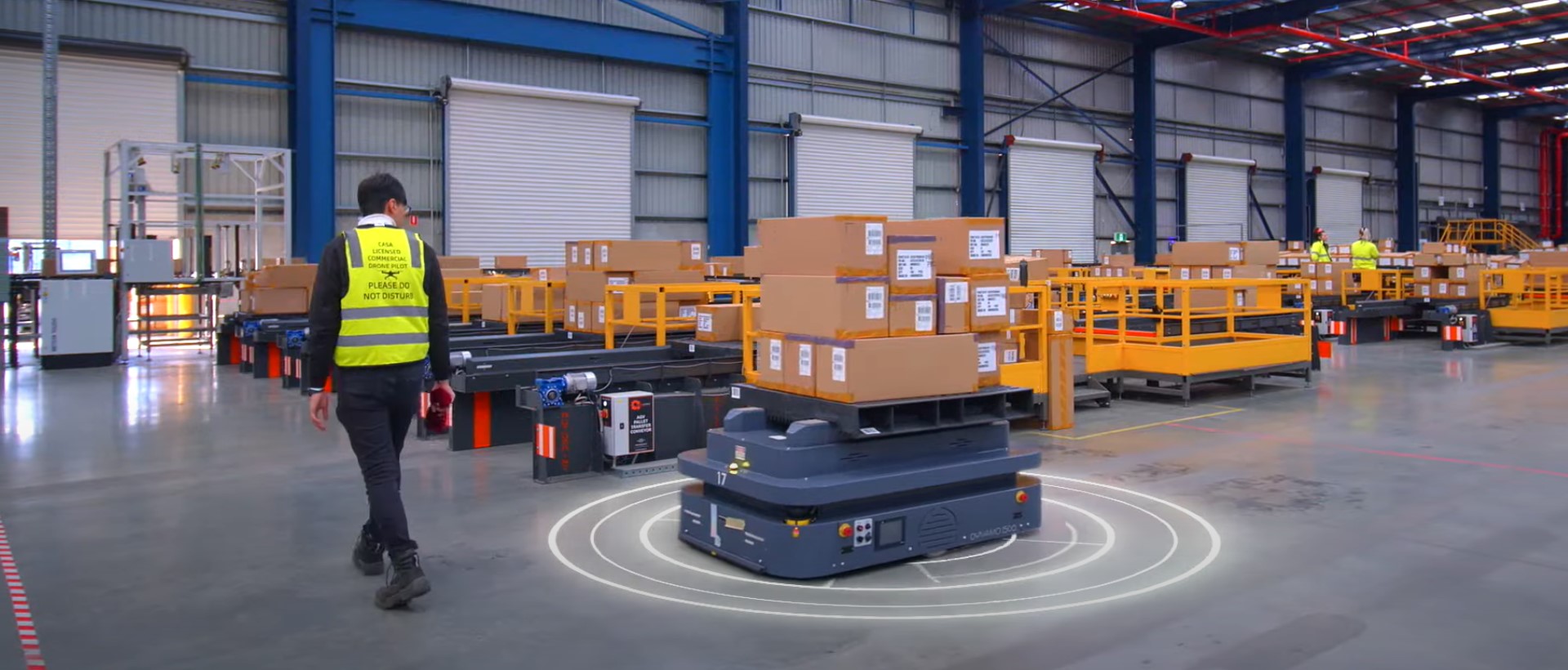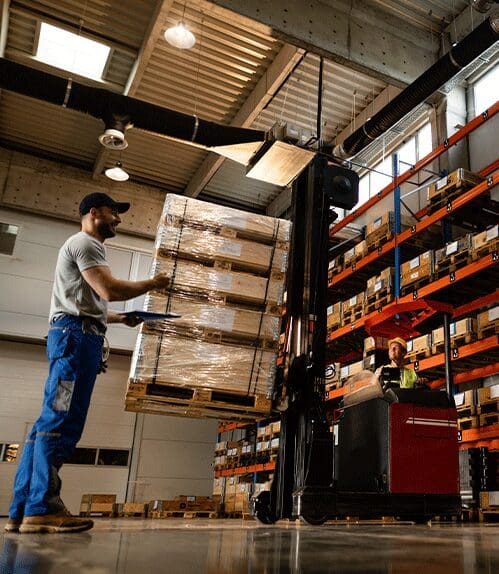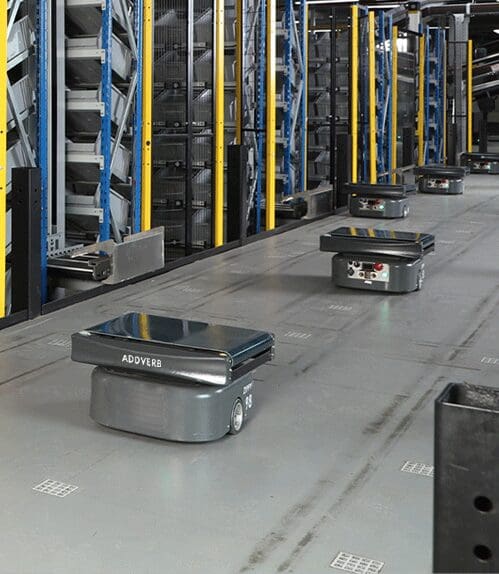Table of Contents
Imagine a world where mobile robots confidently navigate bustling environments with cutting-edge technology, seamlessly gliding from one point to another while effortlessly dodging obstacles in real time. Your imagination is a reality in the smart warehouses of today. The integration of state-of-the-art mobile robot navigation and safety systems is revolutionizing operations, ensuring smooth and collision-free movement.
Have a look at how our mobile robots navigation work in a symphony:
Key Technologies for Mobile Robots Navigation
LiDAR-Based Navigation
LiDAR (Light Detection and Ranging) is widely adopted for its precision and real-time mapping capabilities. It helps robots navigate unfamiliar environments by providing high-resolution, 3D data for Simultaneous Localization and Mapping (SLAM). The growing use of LiDAR, along with advancements in sensor fusion, now enables better decision-making in dynamic environments, offering accurate obstacle detection and path planning.
Vision-Based Navigation
Vision systems allow robots to “see” like humans. Using cameras and algorithms, they interpret optical data and create a 3D view of the environment. This method reduces costs compared to traditional sensors and can adapt to complex, changing environments, enhancing robots’ versatility.
Hybrid Navigation
Combining LiDAR and vision-based systems, hybrid navigation leverages the strengths of both technologies. This approach offers robust performance in diverse scenarios, from factories to outdoor spaces, and improves robots’ ability to understand and respond to their surroundings.
Safety Systems for Human-Robot Interaction
Mobile robots equipped with enhanced safety features are reducing workplace accidents while improving productivity. As the warehouse automation market is expected to grow, safety innovations play a key role.
- 3D Depth Cameras & Ultrasonic Sensors:
These sensors allow robots to detect objects with precision, ensuring they can avoid obstacles or slow down in crowded environments. The 3D depth cameras help robots maintain situational awareness even in complex, dynamic settings.
- Mechanical Bumpers:
Physical bumpers serve as a last line of defence, triggering emergency stops if the robot comes into direct contact with an object or person.
- Audible & Visual Warnings:
Robots are equipped with lights and sounds that alert nearby workers when turning or navigating through high-traffic areas, preventing accidents before they occur.
- Emergency Stop Systems:
Robots can automatically trigger emergency stop buttons in critical situations, allowing human workers to intervene quickly if necessary.
Trends in Mobile Robot Navigation Technologies
- AI-Powered Path Optimization:
Machine learning algorithms are being integrated into navigation systems to enable real-time adaptation, ensuring continuous learning of optimal routes and safety protocols based on historical data.
- Collaborative Robots (Cobots):
As robots work more closely with humans, collaborative safety systems are becoming more critical. Innovations such as predictive obstacle avoidance and shared control are increasing safety and efficiency in human-robot interactions.
- 5G Integration:
With the expansion of 5G, faster data transmission will allow for more reliable and precise navigation in real-time, improving robot performance in crowded, multi-robot environments
How does effective mobile robot navigation help you in scaling your business?
Effective mobile robot navigation is essential for expanding your business by improving operational efficiency, reducing errors, and optimizing resource allocation. Accurate navigation enables robots to move autonomously through complex environments, minimizing bottlenecks and delays in material handling, order fulfillment, and manufacturing processes. This precision reduces downtime, increases throughput, and allows your workforce to focus on high-value tasks.
Scalable navigation systems also facilitate the integration of additional robots as your operations expand, ensuring that your automation can adapt to increased demand without a corresponding rise in costs. Ultimately, this results in improved productivity, faster order processing, and greater customer satisfaction
Case Study: Maersk’s Fixed & Flexible Warehouse Automation
Maersk implemented a fully automated solution using mobile robots with advanced navigation systems like LiDAR and SLAM for efficient warehouse operations. These robots enabled seamless communication and real-time adjustments within the warehouse, significantly boosting flexibility and productivity. By leveraging IoT integration and robust safety systems, Maersk achieved a faster, more accurate order fulfillment process.
Simultaneous Localization and Mapping (SLAM) is a crucial technology for mobile robot navigation. It enables robots to create a map of an unknown environment while simultaneously keeping track of their location within it. By utilizing sensor data such as LiDAR or cameras, SLAM allows robots to detect and avoid obstacles in real-time, enabling them to navigate complex and dynamic spaces with high precision.
This technology is essential for environments where pre-defined paths may not be practical or where frequent changes occur. SLAM enhances efficiency by enabling robots to operate autonomously and flexibly, reducing the reliance on external infrastructure like beacons or markers. This, in turn, makes scaling automation easier for businesses.
For more details, check out the full case study here.
Conclusion
As the role of mobile robots expands, the continuous improvement in navigation and safety systems will be crucial to their integration into various industries. The blend of technologies such as LiDAR, vision systems, and AI offers robots the ability to navigate complex environments while maintaining high safety standards, driving the future of warehouse automation and beyond.
FAQ
What is obstacle-free mobile robot navigation?
Obstacle-free mobile robot navigation refers to the ability of robots to move autonomously through an environment without colliding with objects, using sensors and advanced algorithms to detect and avoid obstacles in real-time.
How do mobile robots achieve obstacle-free navigation?
Mobile robots use technologies like LiDAR, cameras, and SLAM (Simultaneous Localization and Mapping) to continuously scan their surroundings, build maps, and plan paths to avoid obstacles while navigating.
Why is obstacle-free navigation important for mobile robots?
It ensures efficient, uninterrupted movement in dynamic environments, minimizing downtime and errors in processes like material handling or order fulfillment, which enhances overall productivity.
Can obstacle-free navigation improve business operations?
Yes, by enabling mobile robots to navigate autonomously and safely, businesses can increase operational efficiency, reduce labor costs, and improve throughput, leading to scalability and better resource management.
What industries benefit from obstacle-free mobile robot navigation?
Industries such as warehousing, manufacturing, e-commerce, and healthcare benefit significantly, as obstacle-free navigation allows robots to operate smoothly in fast-paced, complex environments.
Founded in 2016, Addverb offers complete robotics solutions for warehouse and industrial automation, with a strong global presence through its subsidiaries worldwide. The company provides a range of in-house automation products, including Autonomous Mobile Robots, ASRS, and sorting technologies. It serves over 350+ clients, including well-known companies such as Coca-Cola, Amazon, and DHL






